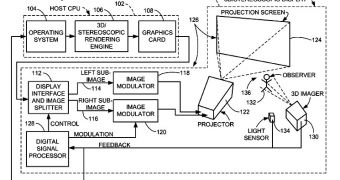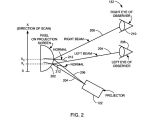Some people are fond of polarized 3D glasses, some people are not, but one thing is for sure: we're all fond of 3D. And that's because we see and think in 3D. It is the normal way of looking at things and Apple wants to bring such display hardware to your living room, as revealed in a recent patent filling. What's best about the Autostereoscopic 3-D display tech is that it is suitable for multiple viewers in a room, who only have to look at a projection screen, just like they would at the cinema.
No glasses. No nothin'. Unless of course, you have to wear spectacles in order to actually see well. It gives a whole new meaning to the term "home cinema," doesn't it? Apple clearly thinks it's doable, since they've filed a 25-page application to protect the autostereoscopic 3-D display method, but that doesn't mean it's just around the corner. As everyone knows (or should know), most of the patents filed every day, not necessarily by Apple, never make it into tangible goods. Nevertheless, when Apple's on to something big - and we reckon this fits the profile - the company delivers.
AppleInsider reveals in a post dating March 20 that the Cupertino folks propose a 3D display system using a projection screen, with a predetermined angularly-responsive reflective surface function. Here's Apple's intentions with it:
"Modern three-dimensional (3D) display technologies are increasingly popular and practical not only in computer graphics, but in other diverse environments and technologies as well," the company said in the filing. "Growing examples include medical diagnostics, flight simulation, air traffic control, battlefield simulation, weather diagnostics, entertainment, advertising, education, animation, virtual reality, robotics, biomechanical studies, scientific visualization, and so forth."
Apple goes on describing how "3D images that are rendered by the 3D/stereoscopic rendering engine are sent to a 3D/stereoscopic display through a suitable interconnect, such as an interconnect based upon the digital video interface (DVI) standard." The company may adopt either wireless or wired hardware for the interconnect, as it claims in the filing.
Ultimately, a digital signal processor (DSP) in combination with a 3D imager would determine the correct location of an observer in the room and opposed to the projection screen. "...Characteristics may include, for example, the heights of the observers, head orientations (rotation and tilt), arm and hand positions, and so forth," Apple explains, also noting that "the 3D imager may be any suitable scanner or other known device for locating and determining the positions and characteristics of each observer."

 14 DAY TRIAL //
14 DAY TRIAL // 
